I’ve taught students online and in classrooms of all kinds, and measuring student engagement is different every single time. With each group of students, new strategies are needed to figure out ways to assess students and their participation in class–from the eager students who wants to answer every question to the quiet ones who may or may not be actively engaged in the lesson. How do you tell the difference between the quiet and engaged and quiet and daydreaming when grading participation?
We know that learners of every age make better connections when they are actively thinking and talking about our teaching material. We can make our class time more valuable by creating a system for how we want to interact with students – verbally and nonverbally – to show how their participation is expected. The ideal is for each student to take part in the class in ways that meet our goals but also reflect their own learning styles.
Participation doesn’t always mean how much they speak up in class – it can also be about having the right materials with them, completing in-class assignments, working collaboratively, or staying on task. It can be difficult to track this because different students participate in their own way.
Today I will share three classroom participation grading techniques that I’ve used and how they meet the above needs.
Stamp of Approval

When I first started teaching middle school, I asked a close friend of mine to share her tips and strategies for classroom management for that age. She told me about a system where each student gets a weekly page with a grid on it. Each day has two slots for participation, and the students leaves it on their desk in front of them as they work or participate in the lesson. They get stamps on their grid for excellent participation and an X or some other code for not working hard, talking, not paying attention, etc.
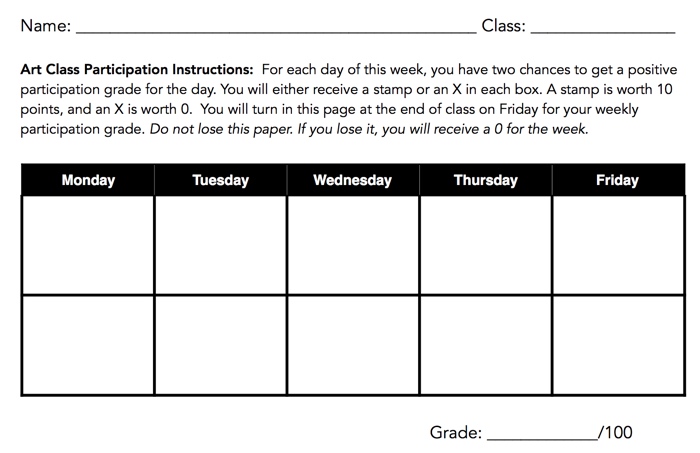
At the end of the week, students turn in their form for a participation grade. On the back, I had a spot where students could write what they learned in art that week which could cancel out some of their Xs if they showed they really did learn the material.
This is the classroom management system I used at the beginning of this school year for several months with great results.
If a student raised their hand to give an idea, I would walk over and reward their participation in the discussion with a stamp. That encourages other students who wouldn’t maybe raise their hand to raise their hand and share some of their thoughts when they see that other kids are getting rewarded. When we’re working on art projects, if I see someone’s working diligently, I’ll walk by and stamp. I do the same with the do-nows/bellringers. If I see that they’ve come in the classroom, they have all their supplies, they get right to work, they can get a stamp, too.
Now, if they are not doing what they’re supposed to do, if I’ve asked the class to be silent and they’re talking, I walk by and I put an X. It could be an X in a blank box, or I could mark off a stamp that they’ve already earned, if they’ve already earned 2 stamps for the day. They lose 1 of their stamps. Then, at the end of each week, I take that and grade it. There’s 10 spots. Each one is worth 10 points. A stamp is worth 10 points. An X is worth zero.
It’s a really awesome system that works great if try keep up with it. It provides documentation, visual reinforcement, and even middle schoolers find getting a stamp fun. They are still kids after all, even if they don’t think they are. It’s a really awesome system. Again, thanks to my friend, Amber, for sharing that with me.
What to download the grid to try it out in your classroom?
The Same Thing But Different
You may have seen that I only did this for a few months. I had to stop because in semester 1, I was a traveling art teacher. Some of the classrooms were impossibly set up to where I couldn’t physically get to the students who I wanted to stamp. I found myself crawling over the students and tables just to give stamps, so it didn’t work out. (Now that I am back mostly in the more spacious art room, I probably could start it again with good results.)
So I now do the same thing in a way. Each kid still has a grid of 10, but it is on a printed seating chart on a clipboard. The grading software we use at my school has an option to print the seating chart with the grid, so it’s super easy.
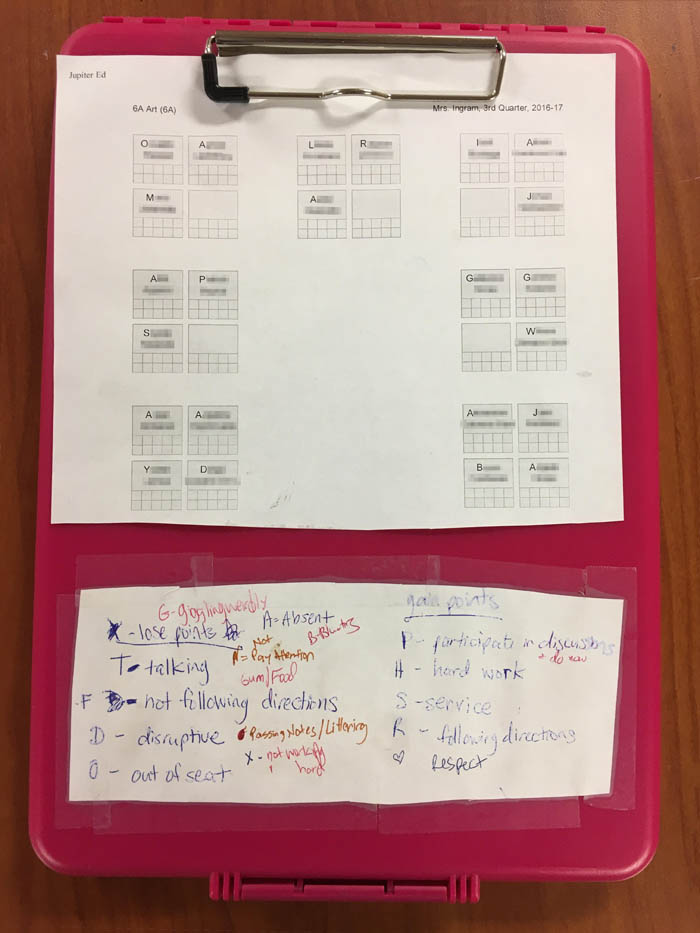
I have a list of codes taped to the clipboard for various participation activities–working hard, not paying attention, participating in discussions, talking, out of seat when not permitted, etc. I carry this around while I teach and mark when appropriate. (Yes, “giggling weirdly” is on there. It was a joke for my 8th grade boys who are the giggliest bunch of kids you’ll ever see.) When it starts to fill, I’ll enter class participation grades in the gradebook and print a new seating chart.
When students get disengaged, talk too much, etc, I point out the clipboard to them reminding them that their behavior is being documented. If students get more than three bad marks during a lesson, there is some sort of consequence (in our school, we use a discipline book with systematized consequences).
Class Dojo
The K-5 Art Teacher at my school just introduced me to a program called Class Dojo. It is essentially the same as above–giving and taking away points. It’s a website and app, and each kid has a little monster avatar that they can personalize which they find to be super fun (even the 8th graders). I like it, because I have one particularly goofy 6th grade class. They are great at participation during lessons, but getting them settled is a challenge because it is the last class of the day, and they come straight from PE. I can take my phone out into the line and use the app, and when I give negative or positive points, it plays a sound, so the students have that auditory reminder that they should be making better choices. The sounds from the app do the nagging for me.
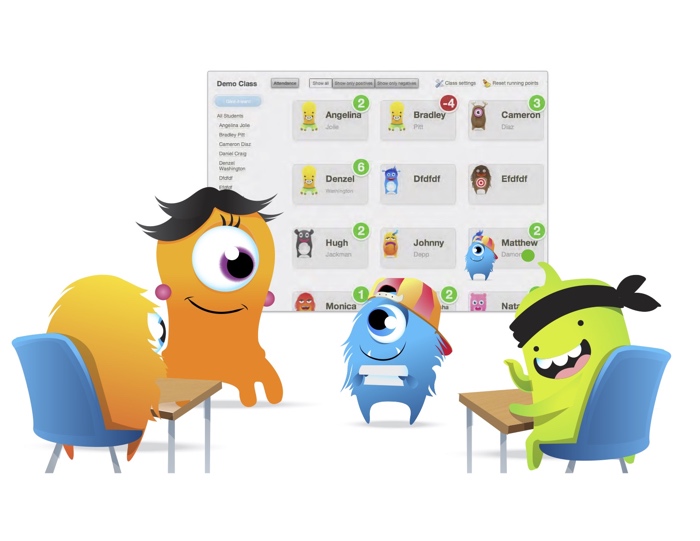
When they are working, I can show the whole class up on the screen using the projector, and when I give or take away points from my phone, a pop up will show who got the points. The students LOVE getting points, and I am finding that students who don’t usually speak up in discussions do so just so they can get the points for it. I have some rewards in store for students who reach a certain number of points as well.
You can create your own categories for points, and they whole system works very well so far. I was worried I wouldn’t be able to manage the giving and taking away points while teaching, but it hasn’t been an issue at all so far.
(This post is in no way sponsored by Class Dojo. I just like it and use it, so I wanted to share.)
So, there you have it! Three ways to measure participation in an art classroom. Remember, you can download my grid handout if you want by clicking below.
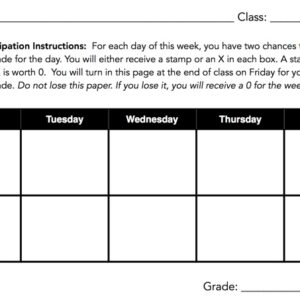
Free Resource!
Stamp of Approval: Assessing Student Participation
Classroom management tool for you and a review activity for your students.

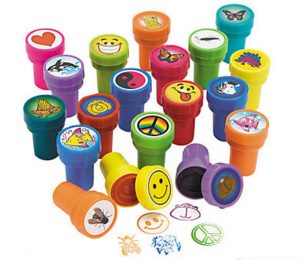
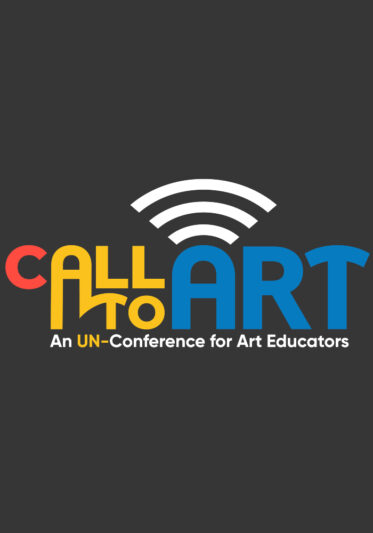
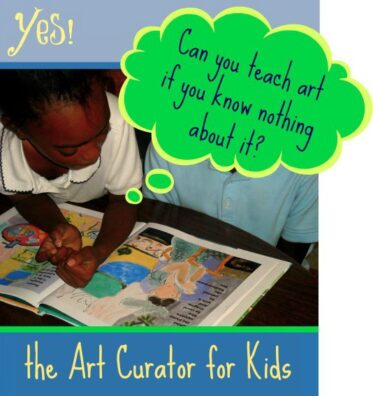
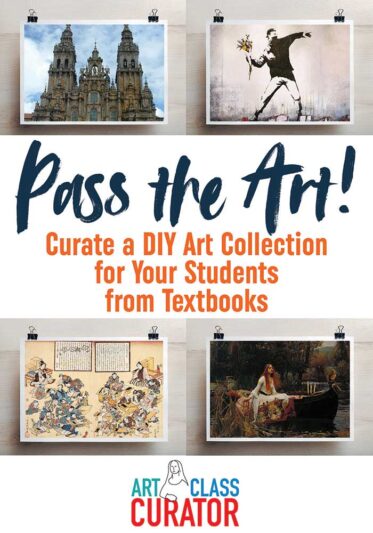

What a great idea, thank you for sharing. Just wondering if you could elaborate on your school’s discipline book. Do the students get detentions, lose breaks,…?
Hi! So basically, the first 3-5 book signings have in class consequences, and I can’t remember them exactly but 1 is a warning, 2 a reflection maybe, 3 could be a detention? And then after the 4th signing, they go to the office every single time they sign and get another set of standard consequences from admin. The book resets every quarter.